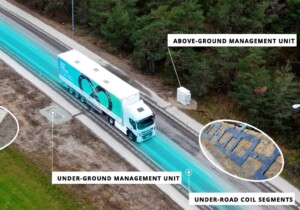It’s becoming clear how Congress’ approval ratings keep dropping to new historic lows—the latest Gallup Poll released yesterday puts it at a squat ten percent—when the legislative body continues to threaten policies not just architects but also the general public hold near and dear. Now, as key transportation bills that set funding for all national infrastructure–including roads, transit, shipping, pipelines, and even sidewalks–prepare for a votes in the House of Representatives and Senate as soon as the coming week, we’re seeing transit, biking, walkability, the environment, and historic preservation all at risk.
Here’s a roundup of the latest:
Among the chief concerns of the House’s HR7 bill, otherwise known as the American Energy & Infrastructure Jobs Act, is that dedicated funding for transit, biking, and walkability is eliminated. That includes funding requirements for Congestion Mitigation and Air Quality (CMAQ) programs that promote alternative transportation, such as sidewalks, bike lanes, and the Safe Routes to School program. But that’s not the end of it; Yonah Freemark at The Transport Politic has a great write-up of all the bill’s problems. For instance, on why funding is being eliminated for transit, bikes, and pedestrians in the first place:
The members of the committee determined that to remedy the fact that gas taxes have not been increased since 1993, the most appropriate course was not to raise the tax (as would make sense considering inflation, more efficient vehicles, and the negative environmental and congestion-related effects of gas consumption) but rather to transfer all of its revenues to the construction of highways. Public transit, on the other hand, would have to fight for an appropriation from the general fund, losing its traditional guarantee of funding and forcing any spending on it to be offset by reductions in other government programs.
Highway cost overruns not covered by the gas tax could be paid for by up to $2 billion from drilling for oil in coastal waters, including areas in the Gulf hit by the massive BP oil spill,and the Arctic National Wildlife Refuge.
The New York Times recently blasted the GOP bill that Secretary of Transportation Ray LaHood, a former Republican congressman himself, called “the worst transportation bill I’ve ever seen during 35 years of public service.” He also told Politico, “It also is the most anti-safety bill I have ever seen…It hollows out the guts of the transportation efforts that we’ve been about for the last three years.”
With a vote imminent, groups from Transportation for America to the National Resources Defense Council declared today a national day of action to get in touch with your elected officials and voice your opinion about the bills.
AIA President Jeff Potter is among those concerned that current transportation bills are flawed. “While we are gratified that both the House and the Senate are moving ahead on transportation bills, there are some provisions that would take our communities in the wrong direction,” said Potter. “We urge Congress to continue working on a truly bipartisan bill that helps meet the design and construction industry goals: hold funding levels steady, support multiple modes of transportation, and account for the many enhancements that well-planned transportation projects can bring to communities throughout this great nation.”
While the AIA praised the Senate for including provisions that assist in planning mixed-use communities around transit, it worries that by removing dedicated transit funding, those planning capabilities are jeopardized. From the AIA’s official statement:
The AIA is concerned that provisions in bills that have passed House committees would hurt a community’s ability to plan. This is especially true for provisions in the Ways and Means bill that remove transit from the trust fund and provisions in the Transportation and Infrastructure committee’s bill that prevent communities from using funds for preservation and re-use of historic facilities.
Historic preservation is at risk in the Senate’s S. 1813: MAP-21. Here’s the gist of the problem from the National Trust for Historic Preservation:
Transportation Enhancements (TE), the single largest source of federal funding for historic preservation, is still under siege.
…
MAP-21 (S. 1813) eliminates dedicated funding for TE, forcing the program to compete with other types of road projects that do not possess the same job creation or cultural heritage benefits as preservation-oriented TE projects. In addition, we anticipate harmful amendments that would further weaken the program.To make matters worse, the outlook for TE is even bleaker in the House. Current proposals not only eliminate the funding set aside but also eliminate the preservation-related categories of the TE program entirely. This is why it is critical to get favorable TE language into the Senate bill.
The National Trust has also called for concerned citizens to contact their legislators about the proposal. You can read more about the connection between preservation and transportation at the Trusts’s Preservation Nation blog.










